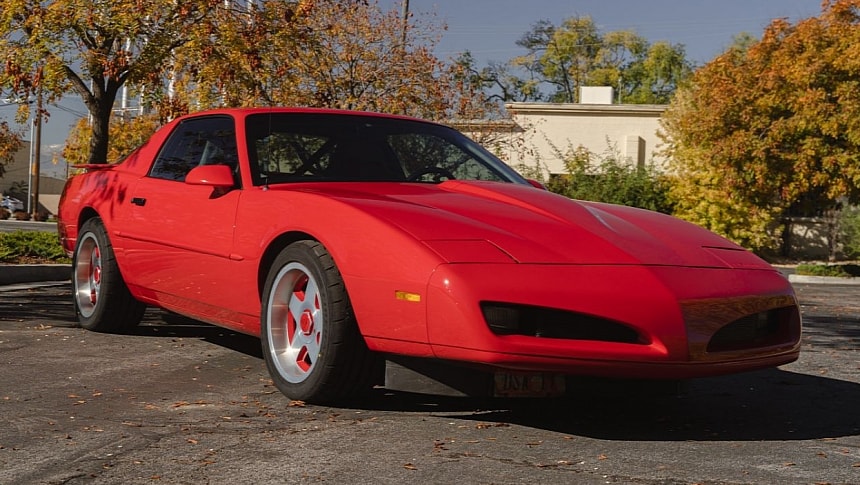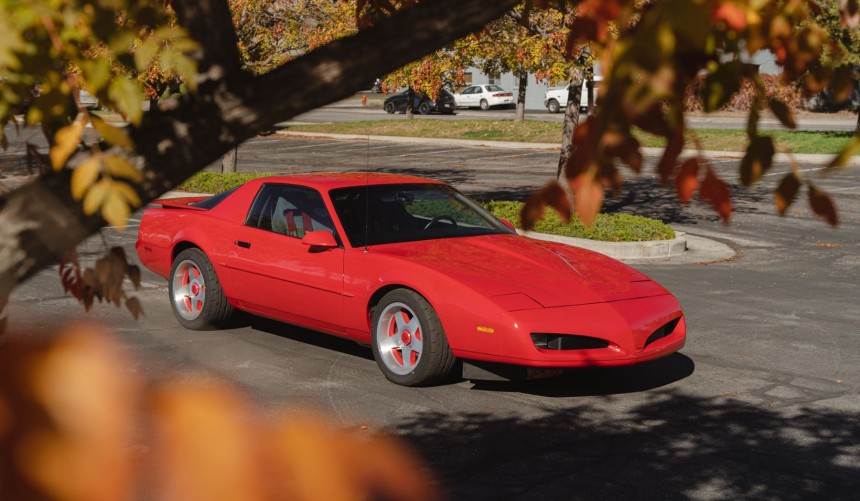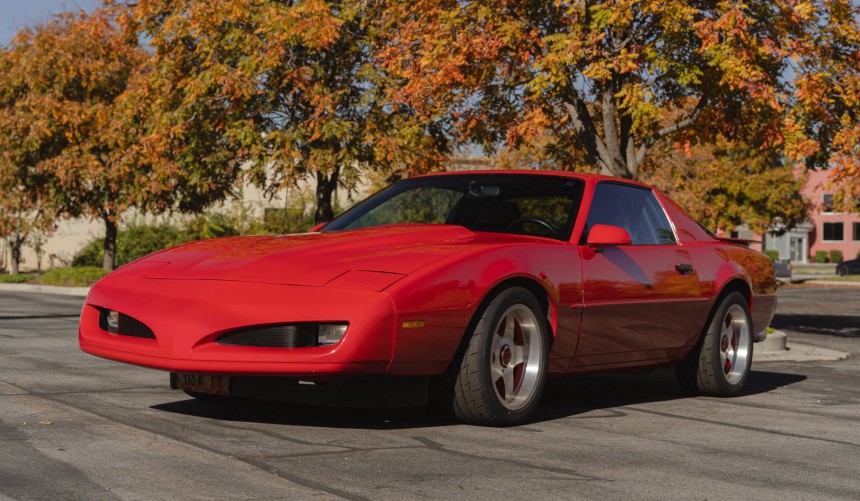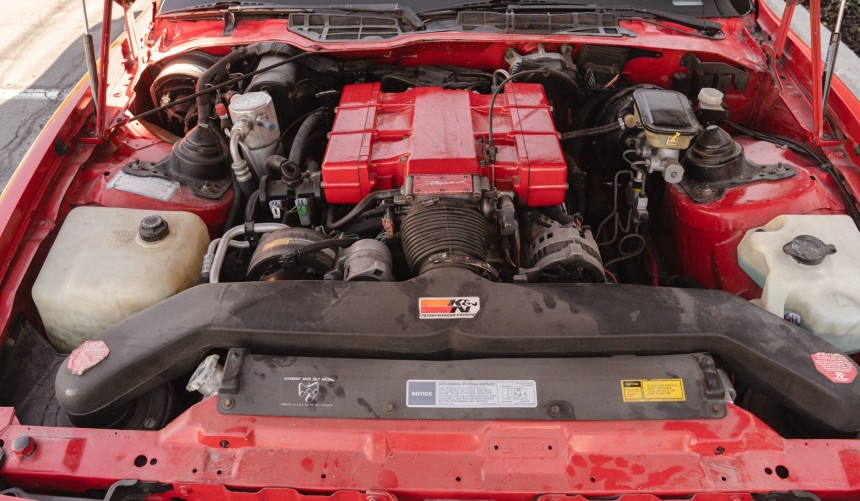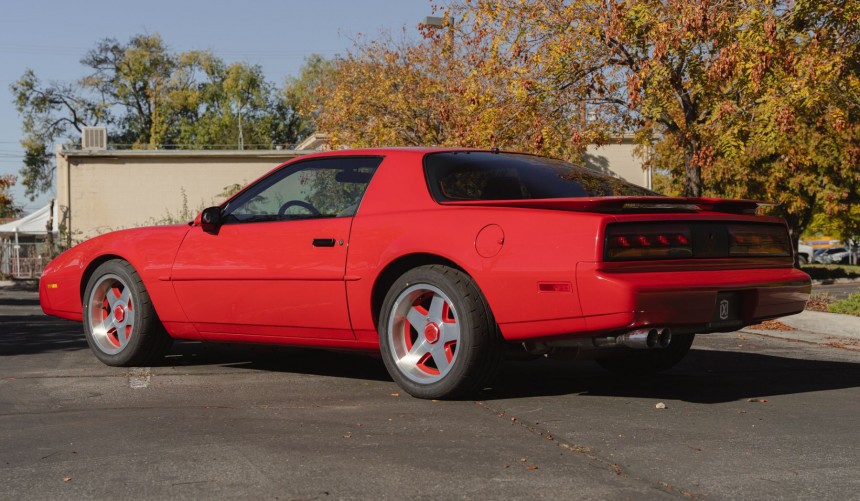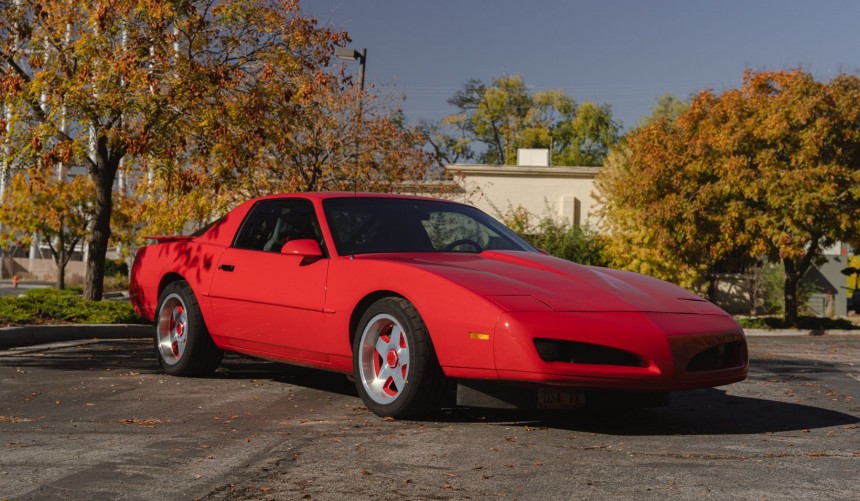During the third-gen Firebird's last year on the market, Pontiac partnered with tuners Street Legal Performance (SLP) Engineering and created a Corvette ZR-1-rivaling muscle car of epic proportions.
First introduced in 1967, alongside its GM F-body sibling, the Chevy Camaro, the Firebird was Pontiac's pony car answer for none other than the wildly popular Ford Mustang.
Two years later, the Trans Am version was introduced, and the Firebird stepped into the high-performance arena, becoming one of the icons of the muscle car golden age.
The Firebird and Camaro were thoroughly redesigned in 1970, and although the curtain dropped abruptly on all things muscle about three years later, the E-body ponies continued to keep the muscle car torch burning, albeit with severely diminished performance figures.
The second-gen Firebird survived for eleven years until it was replaced by an all-new model in 1982.
Thanks to the return of the Trans Am sub-model and the success of the Knight Rider TV series, in which a black Trans Am was the main star, the Firebird continued to be one of Pontiac's most popular offerings.
But, while performance slowly improved, it was still far from the epic levels of the late 1960s and early 1970s.
By 1991, Pontiac was ready to introduce an all-new Firebird, but while some of the brand fans were waiting to get their hands on the redesigned 1993 model, hardcore performance enthusiasts got a huge third-gen-based surprise.
Since 1985, the Firebird and Camaro were competing in the IMSA Firestone Firehawk championship, an increasingly popular, tightly-contested road racing series where near-stock versions of the pony cars were going head-to-head in epic races.
For the 1991 season, New Jersey-based Street Legal Performance (SLP) Engineering, a GM tuner established by drag racing ace Ed Hamburger, partnered up with Pontiac and created a thoroughly tuned Firebird in the hopes of dominating the championship.
But, since homologation rules required the race cars to be heavily based on road cars, SLP and Pontiac had to develop a limited series of road-going versions and market them through Pontiac dealerships.
Based on the stock Firebird Formula, the Firehawk, which could be had by checking the Regular Production Option B4U box on the order sheet, received a series of upgrades meant for the track. The production run started in 1990, with most of the units sold to the public being based on 1991 and 1992 model year Formulas.
Visually, the SLP-prepped Firebird was nearly identical to the stock Formula, particularly to the untrained eye. The only feature that hinted at the uniqueness of this limited-edition muscle car was the bespoke set of wheels wrapped in Firestone Firehawk rubber.
However, the Firehawk was a beast of a Firebird Formula equipped with a tuned V8, a ZF 6-speed manual borrowed from the Corvette, 1LE brakes and suspension, and a Dana 44 rear axle with 3.54:1 Posi-gears.
Under its offset scooped hood, the Firehawk hid an L98 350-ci (5.7-liter) Chevy small-block V8 with four-bolt mains, a forged steel crankshaft, 1053 alloy forged steel "pink" conrods, lightweight hypereutectic aluminum pistons, a hydraulic roller camshaft, and ported aluminum heads, and a custom exhaust system.
All these goodies pushed the modified L98 from the stock 245 hp rating to 350 hp at 5,500 pm and 390 lb-ft (530 Nm) at 4,400 rpm.
Apart from the powertrain and standard chassis upgrades, the Firehawk was also available with an optional Competition Package, which, as the name implied, added a series of motorsport upgrades.
Those included a full roll cage and a rear-seat delete, an aluminum hood, and Recaro bucket seats with full racing harnesses.
Apart from those, the most impressive upgrade that came with the Competition Package was the front Brembo brakes comprised of the same four-piston calipers and cross-drilled rotors used on the iconic Ferrari F40.
According to SLC, a Firehawk equipped with the Competition Package was able to accelerate from 0 to 60 mph (97 kph) in 4.6 seconds and run the quarter mile in 13.2 seconds at 107 mph (172 kph).
Those figures, which were on par with what a 1991-1992 Corvette ZR-1 could achieve, seemed too good to be true, so MotorTrend magazine put the Firehawk to the test.
Surprisingly, the figures published were not far from what SLC stated on the car's official brochure. The editors managed to achieve a 0 to 60 mph (97 kph) time of 4.9 seconds and a 13.4-second quarter mile run at 105 mph (169 kph).
An epic street fighter that didn't benefit from a worthy marketing campaign.
Although fully street-legal, emission-compliant, and covered by the standard Pontiac warranty, the epic Formula Firehawk flew under the radar.
Pontiac chose not to advertise the RPO B4U option that turned a normal Firebird Formula into a Firehawk, so even if it was theoretically available for any Pontiac dealer, few of them knew about its existence.
That, combined with the $39,995 ($92,226 in 2024 money) starting price of the B4U option, meant that only 25 third-gen-based Firehawks were ever built.
Pontiac and SLC continued their partnerships, and the Firehawk continued as an option until 2002, but most of them only benefited from subtle upgrades that improved looks and driveability rather than engine output.
Today, the original Firehawk is forgotten by many enthusiasts despite being one of the first serious muscle cars to bring performance back to the epic levels of the golden age.
Of the original 25 units built in 1991 and 1992, a few have survived, but despite their rarity and awesomeness, they are surprisingly affordable.
The red example shown above was sold by LUXE Automotive Sales in 2021 for just $40,000.
Though forgotten by many, the original Firehawk was an epic modern muscle car and one of the most impressive Pontiacs of the 1990s.
For more details and footage of this 1990s muscle car icon, we recommend watching the original 1992 MotorWeek review in the video below.
Two years later, the Trans Am version was introduced, and the Firebird stepped into the high-performance arena, becoming one of the icons of the muscle car golden age.
The Firebird and Camaro were thoroughly redesigned in 1970, and although the curtain dropped abruptly on all things muscle about three years later, the E-body ponies continued to keep the muscle car torch burning, albeit with severely diminished performance figures.
The second-gen Firebird survived for eleven years until it was replaced by an all-new model in 1982.
Thanks to the return of the Trans Am sub-model and the success of the Knight Rider TV series, in which a black Trans Am was the main star, the Firebird continued to be one of Pontiac's most popular offerings.
But, while performance slowly improved, it was still far from the epic levels of the late 1960s and early 1970s.
An epic, motorsport-inspired farewell to the third-generation
Since 1985, the Firebird and Camaro were competing in the IMSA Firestone Firehawk championship, an increasingly popular, tightly-contested road racing series where near-stock versions of the pony cars were going head-to-head in epic races.
For the 1991 season, New Jersey-based Street Legal Performance (SLP) Engineering, a GM tuner established by drag racing ace Ed Hamburger, partnered up with Pontiac and created a thoroughly tuned Firebird in the hopes of dominating the championship.
But, since homologation rules required the race cars to be heavily based on road cars, SLP and Pontiac had to develop a limited series of road-going versions and market them through Pontiac dealerships.
The Formula Firehawk is born
Visually, the SLP-prepped Firebird was nearly identical to the stock Formula, particularly to the untrained eye. The only feature that hinted at the uniqueness of this limited-edition muscle car was the bespoke set of wheels wrapped in Firestone Firehawk rubber.
However, the Firehawk was a beast of a Firebird Formula equipped with a tuned V8, a ZF 6-speed manual borrowed from the Corvette, 1LE brakes and suspension, and a Dana 44 rear axle with 3.54:1 Posi-gears.
Powered by a very potent V8 and available with Ferrari F40 brakes
All these goodies pushed the modified L98 from the stock 245 hp rating to 350 hp at 5,500 pm and 390 lb-ft (530 Nm) at 4,400 rpm.
Apart from the powertrain and standard chassis upgrades, the Firehawk was also available with an optional Competition Package, which, as the name implied, added a series of motorsport upgrades.
Those included a full roll cage and a rear-seat delete, an aluminum hood, and Recaro bucket seats with full racing harnesses.
Apart from those, the most impressive upgrade that came with the Competition Package was the front Brembo brakes comprised of the same four-piston calipers and cross-drilled rotors used on the iconic Ferrari F40.
Corvette ZR-1-rivalring performance
Those figures, which were on par with what a 1991-1992 Corvette ZR-1 could achieve, seemed too good to be true, so MotorTrend magazine put the Firehawk to the test.
Surprisingly, the figures published were not far from what SLC stated on the car's official brochure. The editors managed to achieve a 0 to 60 mph (97 kph) time of 4.9 seconds and a 13.4-second quarter mile run at 105 mph (169 kph).
An epic street fighter that didn't benefit from a worthy marketing campaign.
Although fully street-legal, emission-compliant, and covered by the standard Pontiac warranty, the epic Formula Firehawk flew under the radar.
Pontiac chose not to advertise the RPO B4U option that turned a normal Firebird Formula into a Firehawk, so even if it was theoretically available for any Pontiac dealer, few of them knew about its existence.
That, combined with the $39,995 ($92,226 in 2024 money) starting price of the B4U option, meant that only 25 third-gen-based Firehawks were ever built.
The original Firehawk today
Today, the original Firehawk is forgotten by many enthusiasts despite being one of the first serious muscle cars to bring performance back to the epic levels of the golden age.
Of the original 25 units built in 1991 and 1992, a few have survived, but despite their rarity and awesomeness, they are surprisingly affordable.
The red example shown above was sold by LUXE Automotive Sales in 2021 for just $40,000.
Though forgotten by many, the original Firehawk was an epic modern muscle car and one of the most impressive Pontiacs of the 1990s.
For more details and footage of this 1990s muscle car icon, we recommend watching the original 1992 MotorWeek review in the video below.
